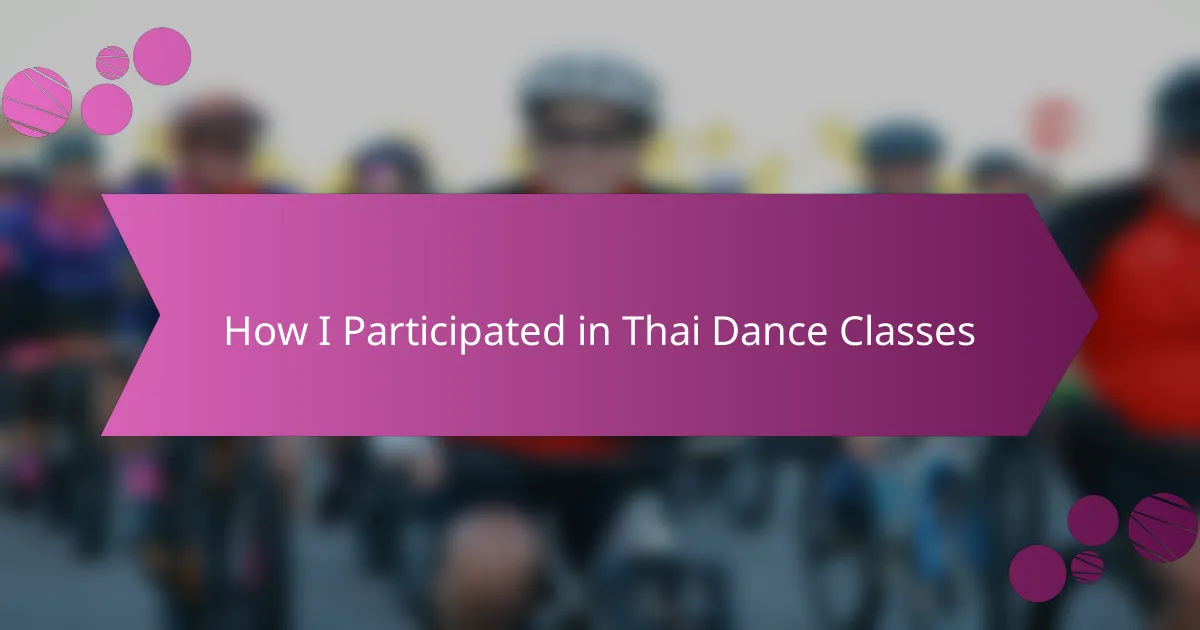Key takeaways
- The Thai Music Festival celebrates Thailand’s diverse musical heritage, featuring both traditional and contemporary performances.
- Thai dance serves as an expression of cultural storytelling and [censured], fostering community connections among participants.
- Learning Thai dance techniques enhances physical fitness and mental well-being while deepening appreciation for Thai culture.
- Participating in dance classes creates social bonds and offers a joyful escape from daily routines, enriching personal experiences.
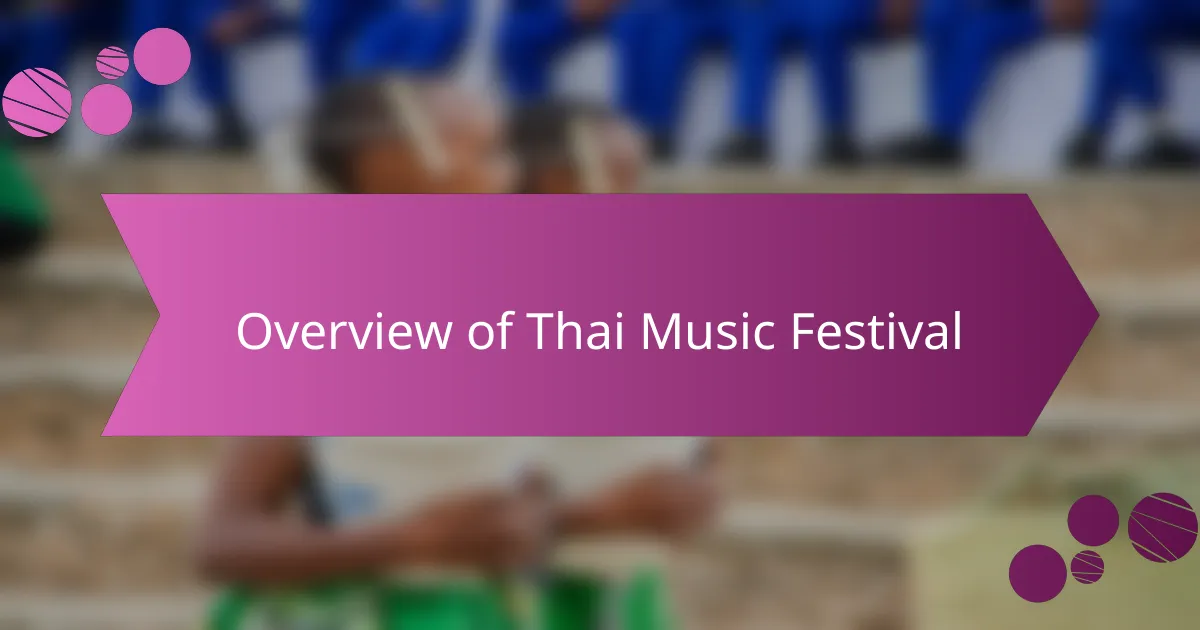
Overview of Thai Music Festival
The Thai Music Festival is a vibrant celebration of Thailand’s rich musical heritage and cultural diversity. Attending it was an eye-opening experience for me; the joyous atmosphere and the array of performances truly brought the essence of Thai culture to life. The festival not only showcases traditional music but also includes modern interpretations, making it appealing to a wide audience.
One of the highlights for me was watching the Thai dance performers. Their elegant movements tell stories that resonate deeply with the music. It reminded me of the grace I observed during the dance classes I participated in, where rhythmic movements merged with emotion, creating a captivating experience.
| Aspect | Thai Music Festival |
|---|---|
| Purpose | Cultural celebration and preservation |
| Performances | Traditional and contemporary music |
| Dancers | Trained artists and community participants |
| Atmosphere | Vibrant and lively |
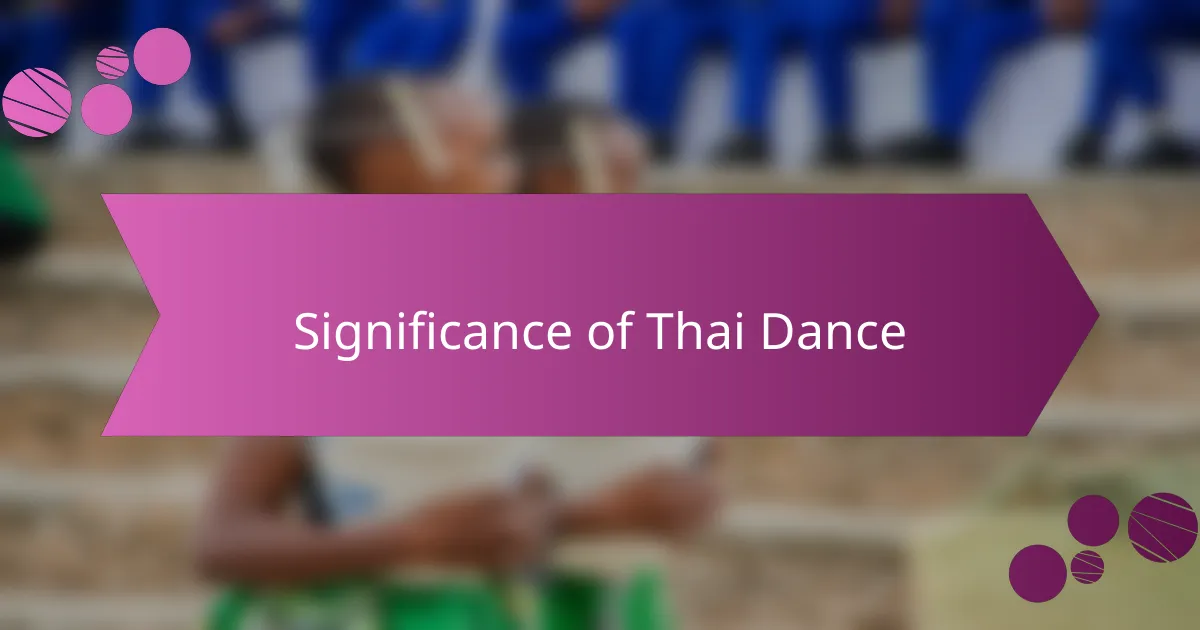
Significance of Thai Dance
Thai dance holds significant importance within Thai culture, serving as a vibrant expression of history, tradition, and [censured]. I remember my first experience in class, the way the rhythmic movements seemed to tell stories from centuries past. Each gesture conveys emotion and conveys cultural narratives, allowing me to connect with Thailand’s rich heritage.
Participating in Thai dance classes not only taught me the art itself but also deepened my appreciation for the grace and discipline it embodies. The bond I felt with my fellow dancers, as we learned intricate routines together, is something I’ll carry with me. It’s not just about the dance; it’s about becoming part of a community that values and preserves its cultural roots.
| Aspect | Thai Dance |
|---|---|
| Purpose | Expression of storytelling and [censured] |
| Emotional Connection | Creates community bonds among participants |
| Cultural Significance | Preserves heritage and traditions |
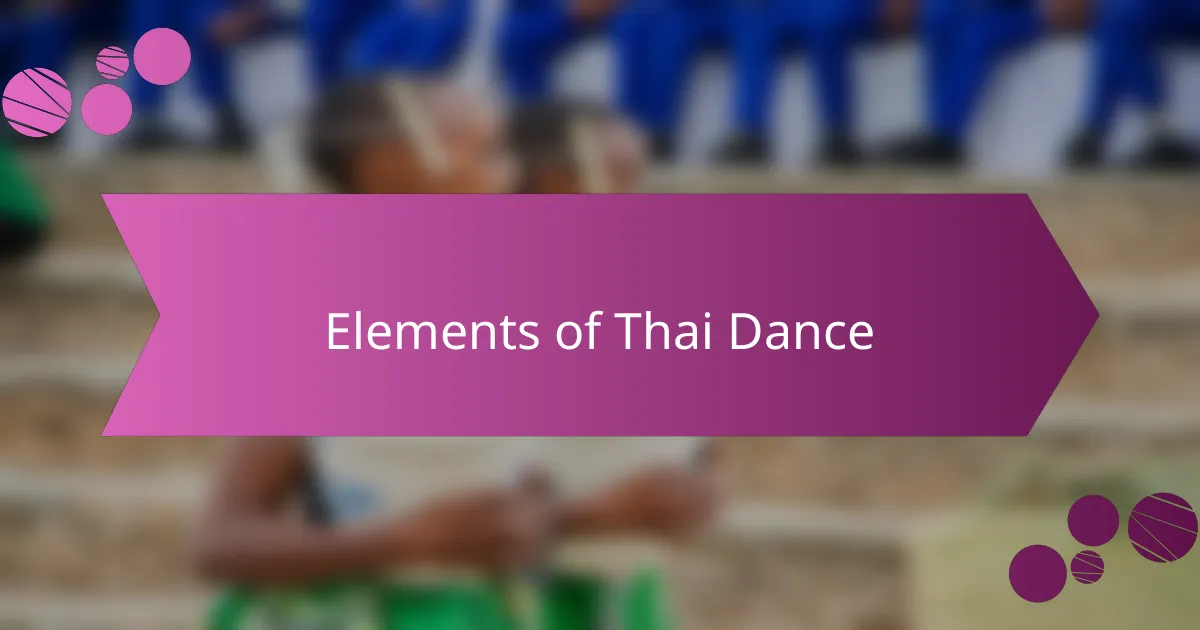
Elements of Thai Dance
Thai dance is characterized by its graceful movements and intricate gestures. I recall the first time I attempted to replicate the delicate hand positions; it felt like trying to speak a new language with my body. Each gesture is not just for show; it’s imbued with meaning, often representing elements like nature, emotions, and ancient legends. Isn’t it fascinating how a simple movement can carry so much weight?
The costumes worn during performances also contribute significantly to the dance’s visual storytelling. I remember the vibrant colors and elaborate designs made me feel like I was stepping into a living tapestry of Thai culture. The way the fabric flowed with each movement added an additional layer of beauty, creating an almost ethereal connection to the performance. These visual elements combine with the rhythms of traditional music, making the experience as much about what you see as what you hear.
Additionally, the music accompanying Thai dance embodies the spirit of the performance. I learned to feel the beats resonate in my chest, guiding my movements. The interplay between the music and dance creates a dialogue of its own, where each step is in perfect harmony with the melody. Reflecting on this, I often wonder how many stories are told through each performance, waiting for an audience to discover their depth.
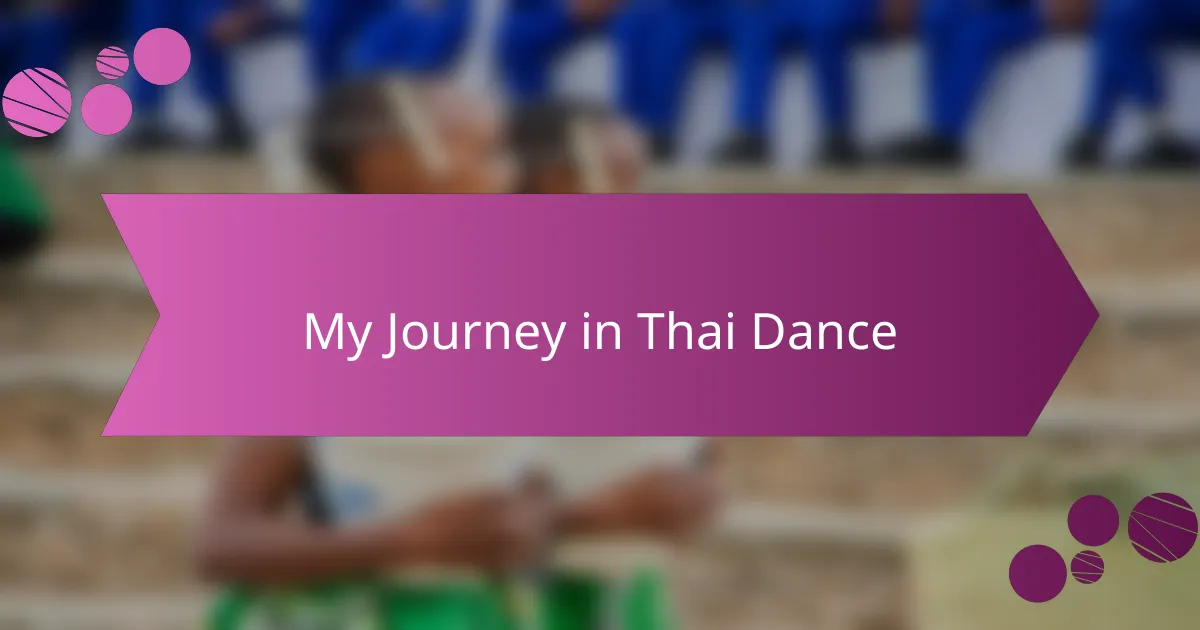
My Journey in Thai Dance
Participating in Thai dance classes was an extraordinary journey for me. I remember stepping into the studio for the first time, nervous yet eager. The instructor’s warm smile instantly put me at ease and ignited my curiosity about this ancient art form. I can still feel the exhilaration of learning the basic movements, where each step felt like a gentle conversation with the air around me.
As I progressed, the connections I formed with my classmates added another layer to my experience. We laughed as we fumbled through complicated routines, but we also celebrated our small victories together. It was an unforgettable feeling to share those moments, realizing that we were not just learning to dance; we were weaving ourselves into a rich tapestry of culture and camaraderie.
What struck me the most was how every dance had a story. As I immersed myself in the practice, I started to glimpse the historical narratives behind each gesture. I often found myself pondering the depths of these movements. How could such fluidity and grace encapsulate centuries of tradition? This journey was not just about mastering steps; it was about understanding the heart of Thailand and the profound stories each dance communicates.
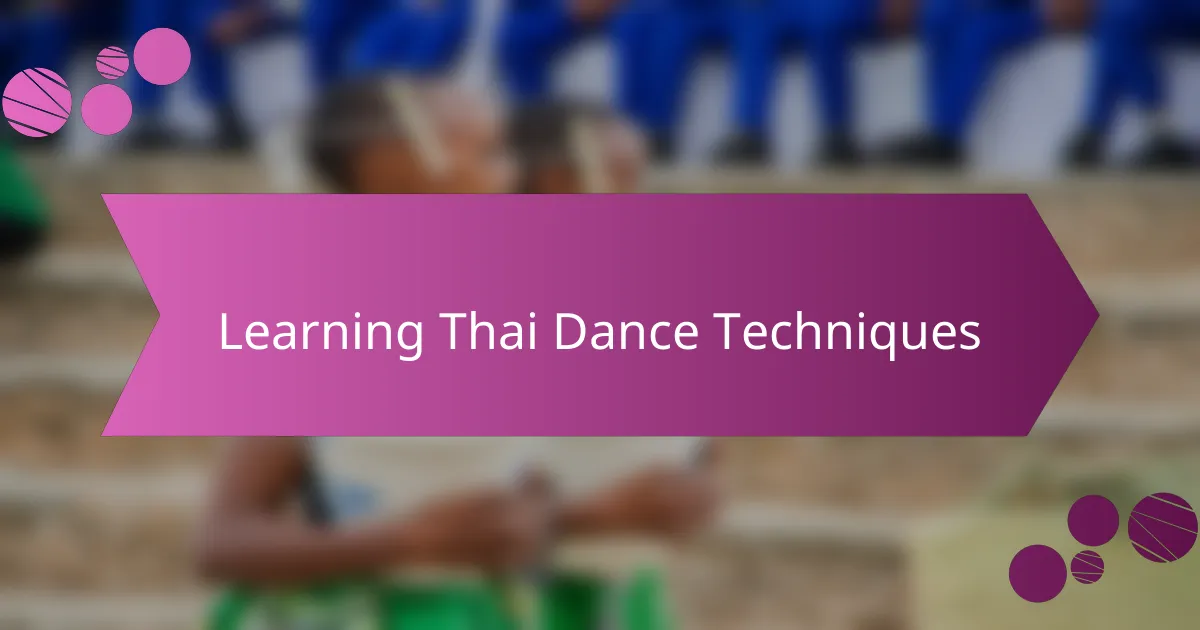
Learning Thai Dance Techniques
Taking Thai dance classes opened up a whole new world for me. Each technique required a unique combination of grace and precision. I found myself immersed in the rhythm; some movements made my heart race with excitement, while others felt like a meditative experience.
I remember struggling at first with the intricate footwork. But as I practiced, the dances began to flow more naturally. Each session left me feeling energized, almost like I was getting lost in the music.
Here’s a comparison of different Thai dance techniques that I encountered during my journey:
| Technique | Description |
|---|---|
| Ram Thai | A lively dance form that involves powerful movements and storytelling through gestures. |
| Khon | A classical masked dance that narrates epic tales with grace and elegance, often performed during festivals. |
| Fawn Thai | A softer, romantic style that emphasizes beauty and poise, usually characterized by gentle movements. |
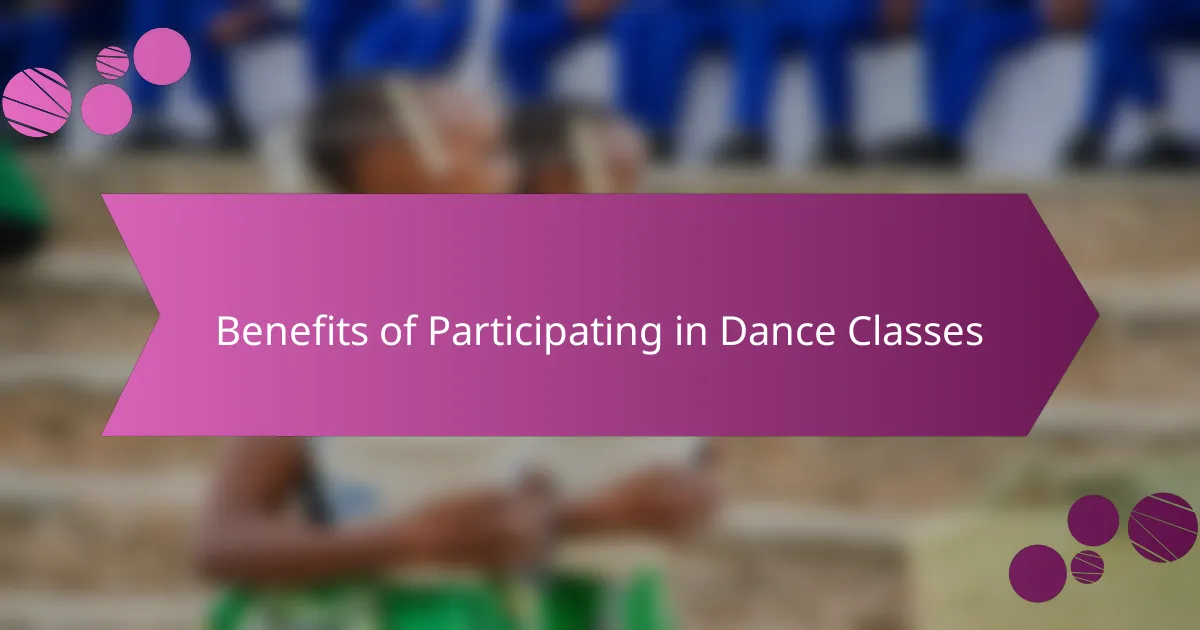
Benefits of Participating in Dance Classes
Participating in Thai dance classes has offered me significant benefits, both physically and mentally. Not only have I improved my flexibility and coordination, but I’ve also discovered a newfound appreciation for Thai culture and its artistic expression. Engaging with the rhythm and movements allows me to lose myself in the moment, fostering a sense of mindfulness that I cherish deeply.
Here are some of the key benefits I’ve experienced:
- Enhanced physical fitness and stamina through regular practice.
- A deeper understanding of Thai culture and traditions.
- Opportunities to form friendships and connecting with fellow dance enthusiasts.
- Increased self-confidence as I mastered various dance techniques.
- An enjoyable way to relieve stress and escape from daily routines.
- Improved coordination and balance, which benefits other activities.
Overall, these benefits have enriched my life in ways I never anticipated.
